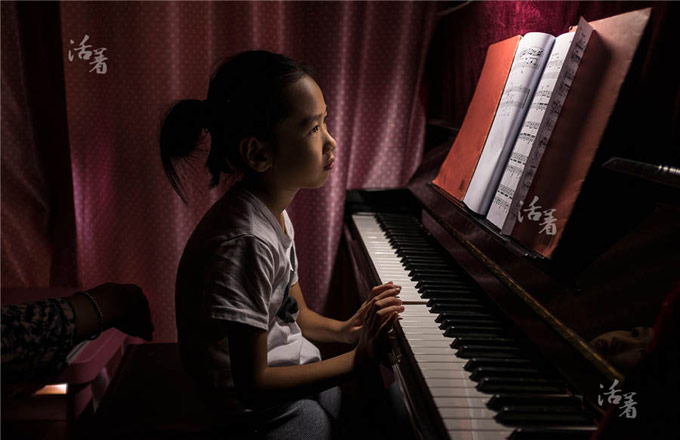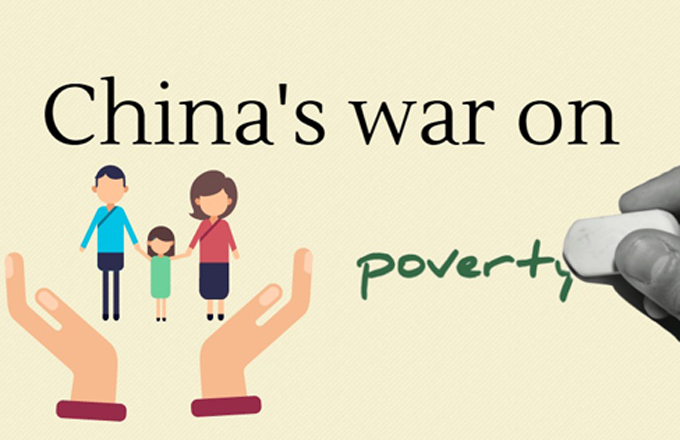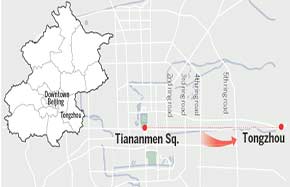China issues white paper on right to development
VI. Promoting Social Development
China pursues shared development and common prosperity for all people as its development goals.
Over the years, China has been committed to developing various social undertakings, establishing and improving various types of social security and social service systems, and continuously improving the provision of social security. It has striven to provide effective social resources and promote equal access to education so that all share the fruits of development.
Protection of the right to health has significantly increased. The infant mortality rate has dropped from 20 percent in 1949, when the PRC was founded, to 0.81 percent in 2015, and the maternal mortality rate has dropped from 1,500 per 100,000 to 20.1 per 100,000. From 1978 to 2015, total national expenditure on health increased from RMB11.02 billion to RMB4.10 trillion, of which government expenditure on health increased from RMB3.54 billion to RMB1.25 trillion. Per capita health expenditure increased from RMB11.5 to RMB2,980.8, the number of medical and health institutions grew from 169,732 to 983,528, and the total number of health workers increased from 7,883,000 to 10,693,900. In 2015, the number of community medical and health service centers reached 361,000, with the coverage of 52.9 percent. The number of beds in social service institutions with accommodation increased from 828,000 in 1991 to 7,329,000 in 2015, of which beds for the elderly increased from 783,000 to 6,727,000, and those for children increased from 7,000 to 100,000. From 1988 to 2015 the government carried out a key state rehabilitation campaign, offering rehabilitation services for 27.98 million people with disabilities. By the end of 2015 there were 7,111 rehabilitation institutions for disabled persons, which employed 192,000 professionals, and 6,352 nursing agencies offering services to persons with learning, mental and physical disabilities, 2,323 more than the figure in 2010. In October 2016 China published the "Outline of Healthy China 2030" program, advocating that all people make fitness activities part of their life.
A security system covering the whole of society has taken shape. China has established a unified basic old-age insurance system for urban and rural residents throughout the country, and formulated policies to allow workers, and especially rural migrant workers, to participate in basic pension insurance for urban workers and for urban and rural residents. In 2015, 858 million people were covered by the basic pension insurance scheme, and 148 million urban and rural residents were receiving pensions. By the end of 2015 China had established a medical insurance system covering all citizens. The basic medical insurance for urban workers, basic medical insurance for urban residents, and the new rural cooperative medical insurance cover a total of 1,336 million people, keeping the insured rate above 95 percent. The reimbursement rate of hospitalization expenses for workers within the scope of the basic medical insurance exceeded 80 percent, with an increased maximum payment of six times the average annual salary of local workers, and the rate for urban residents within the coverage of the basic medical insurance was around 70 percent, an increase to six times the per capita disposable income of local residents. The reimbursement rates of hospitalization expenses for rural residents within the scope of the new rural cooperative insurance was above 75 percent. From 1994 to 2015, the number of people covered by unemployment insurance increased from 79.68 million to 176.09 million. In 2015, the revenues of the unemployment insurance fund reached RMB136.46 billion, and the expenditure was RMB73.65 billion, and the average monthly payment to the unemployed was increased to RMB968.4. The framework of a work-related injury insurance system involving work injury prevention, compensation, and rehabilitation has been established, which has seen the number of insured growing from 18.22 million in 1994 to 214.32 million in 2015. The number of women covered by the maternity insurance program increased from 9.16 million to 177.71 million.
Social assistance efforts continue to increase. In 1997, the Chinese government began to establish a nationwide system of basic living allowances. It promulgated the Regulations on Guaranteeing Basic Living Allowances for Urban Residents in 1999 and the Interim Measures for Social Assistance in 2014, to ensure all citizens have equal access to social assistance. From 1996 to 2015, the number of urban residents covered by the system of basic living allowances increased from 849,000 to 17.01 million, and, from 1999 to 2015, coverage of rural residents grew from 2.66 million to 49.04 million. The government continues to raise the basic living allowances. In 2011, it formally established a dynamic adjustment mechanism for basic living allowances. In 2015, the average basic living allowance line for urban residents was RMB451 per person per month, and the average monthly subsidy each person received from the government was RMB317. The average basic living allowance line for rural residents was RMB265 per person per month, and the average per capita monthly subsidy provided by the government was RMB147.
China has formulated a series of disaster prevention and relief plans and regulations, gradually strengthening and standardizing disaster relief work. From 2009 to 2015, the central government allocated RMB69.46 billion as natural disaster relief funds, averagely RMB9.9 billion for each year. In 2015, China provided medical assistance to 95.24 million people at a cost of RMB29.85 billion. The government also provides temporary relief to people who suffer sudden, urgent or temporary difficulties when other social assistance systems cannot cover them at the time, or people who still lack basic necessities after receiving assistance. In 2015, 6.67 million households received temporary relief. The industrial safety and emergency rescue system has been continuously improved. Altogether 32 provincial and 316 municipal emergency rescue centers, and 964 emergency rescue bases and teams have been established nationwide, covering coal, non-coal mines, chemicals, and other key industries. In 2015, they took part in 12,438 missions and rescued 44,344 people.
Equal access to education has improved. The gap between urban and rural education has been further narrowed. The Chinese government further promotes the balanced development of compulsory education, carries forward unified reform and development of compulsory education in urban and rural areas of counties, implements such projects as renovation of unsatisfactory compulsory education schools in poor areas, and works to improve conditions for compulsory education schools and teaching venues in rural areas. The Chinese government strictly follows laws and regulations about compulsory education whereby school-age children should be enrolled in nearby schools without the need to sit exams. It also promotes the school district system and the nine-year compulsory system, under which an elementary school pupil will automatically move on to study in the junior high school in the same school district irrespective of his grades in the elementary school. In 2015, the State Council promulgated the "Notice on Further Improving the Mechanism Guaranteeing Funds for Compulsory Education in Urban and Rural Areas." With this notice, China established a mechanism for the first time that applies common funding standards to both urban and rural areas, with the focus on the latter. The mechanism benefits 140 million students, including more than 13 million children of rural migrant workers, more than 30 million boarding students, about 12 million private school students, and about 5 million small-scale school students and students receiving special education. From the fall semester of 2011, the government started to carry out a nutrition improvement program for rural students receiving compulsory education.
The program benefits over 30 million students every year. Efforts have been made to increase the number of rural student enrollments in key universities. Since 2012, the government has implemented special national programs on targeted enrollment in rural and poor areas. In 2015, 75,000 students were enrolled, an increase of 10.5 percent over 2014.
Regional gap in education has further narrowed. The government has increased the college and university enrollment rate of the students from central and western provinces and expanded the scope of the Collaboration Program on Supporting Enrollment in Central and Western Regions. In 2015, the province with the lowest enrollment rate saw the gap with the national average narrowed from 15.3 percentage points in 2010 to less than 5 percentage points. The government has also established the Program on Rejuvenating Higher Education in Central and Western Regions. The central government has provided more funds to strengthen the basic facilities and performance of colleges and universities in these regions.
Educational gap between different groups has further narrowed. Female education has made remarkable progress. In 2013, the number of illiterate females aged 15 and above was 6.7 percent, 17.4 percentage points lower than that in 1995, and the illiterate female population had decreased by more than 70 million compared with 1995. The growth in the number of educated women and the decline in female illiteracy are both greater than those of males.
The government is striving to ensure equal access to compulsory education for children of rural migrant workers. In 2015, compulsory education schools in urban areas of China admitted a total of 13.67 million children of rural migrant workers, with around 80 percent studying at public schools and nearly 6 percent at private schools through a government-funded scheme. In 2016, the State Council promulgated the "Opinions on Strengthening Care and Protection of Left-behind Children in Rural Areas" and "Opinions on Strengthening Protection of Children in Difficult Situation" to safeguard the lawful rights and interests of minors. The Chinese government also works hard to offer greater education opportunities to persons with disabilities. There is one independent special education school in every county with a population of more than 300,000 people and a high population of disabled children. The government also supports the establishment of special education resource centers, encourages regular schools to enroll children with special needs, provides convenience for disabled students to take part in college entrance examinations, and promotes integrated education. Almost 90 percent of blind, deaf-mute, and mentally handicapped children have access to compulsory education. It works to improve the system for subsidizing students with financial difficulties, which offers full coverage from pre-school education to graduate education. In 2015, the government subsidized more than 84.33 million students throughout China, an increase of 29.36 percent compared with 2009, and spent more than RMB156.03 billion, 2.25 times the level of 2009.
The quality of education for ethnic minorities has been continuously improved. China has already created an ethnic education system including ethnic minority primary schools, middle schools, vocational colleges and higher education institutions. Before the PRC was founded in 1949, the illiteracy rate of ethnic minorities in China was above 95 percent, and there was only one higher education institution for ethnic minorities. In the early days of the PRC, there were only 1,300 ethnic minority students in institutions of higher learning across the country, accounting for only 1.4 percent of all students. By 2015 the education level of ethnic minority groups and ethnic minority areas had grown comprehensively. There were 25,955,700 ethnic minority students at that time. There were 32 different types of ethnic minority colleges and universities, and 2,142,900 junior college and college students from ethnic minority groups, accounting for 8.16 percent of the national total. Ethnic minority peoples have expanding access to a broader scope of higher education. Full coverage from undergraduate education to graduate education has been realized for all ethnic minority groups. All of China's 55 ethnic minority groups have graduate students. From 2012 to 2015, under the Program for Training High Caliber Core Personnel for Ethnic Minority Groups, China enrolled and trained 16,000 master's degree candidates and 4,000 doctoral candidates.



















